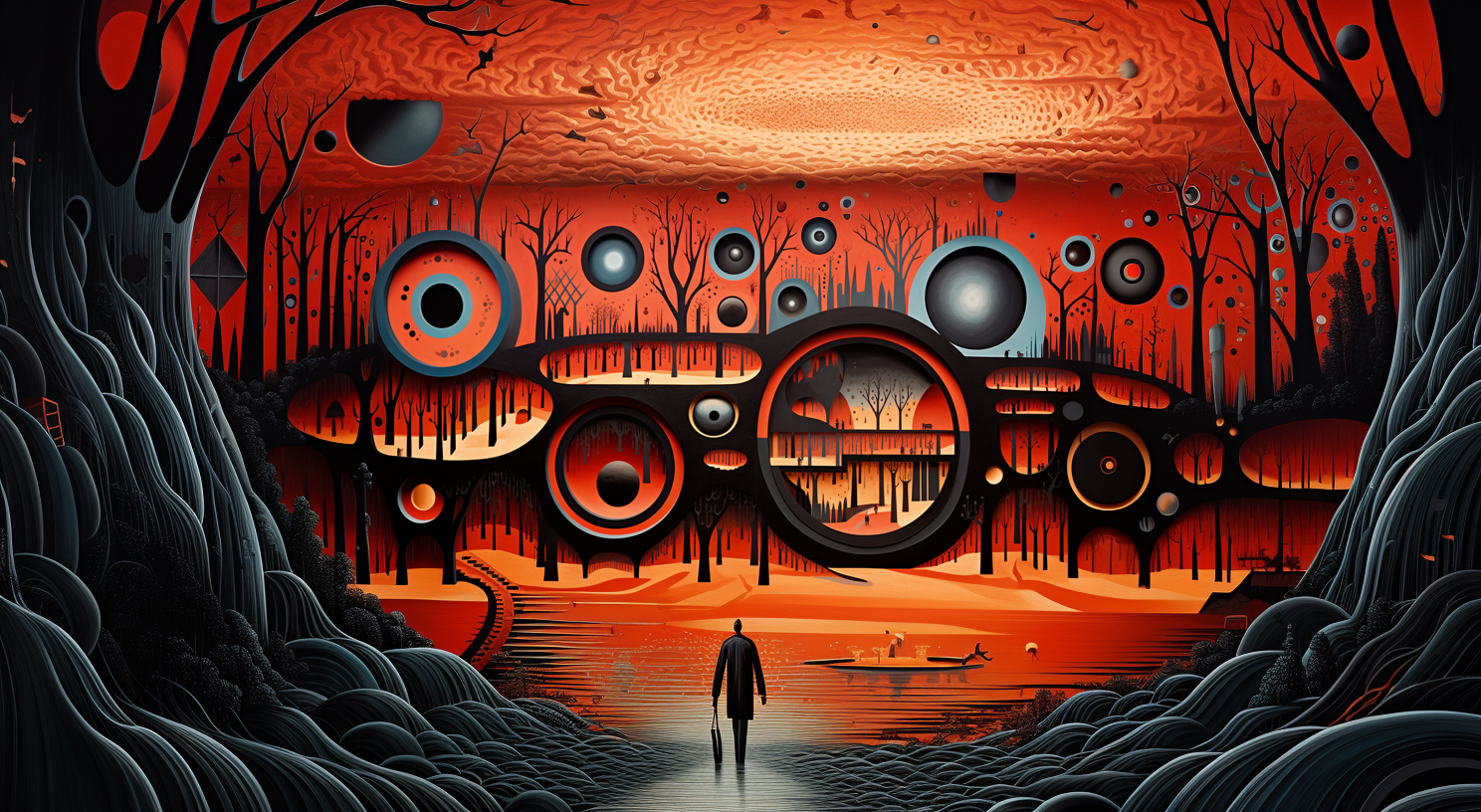1. On ketamine-assisted psychotherapy
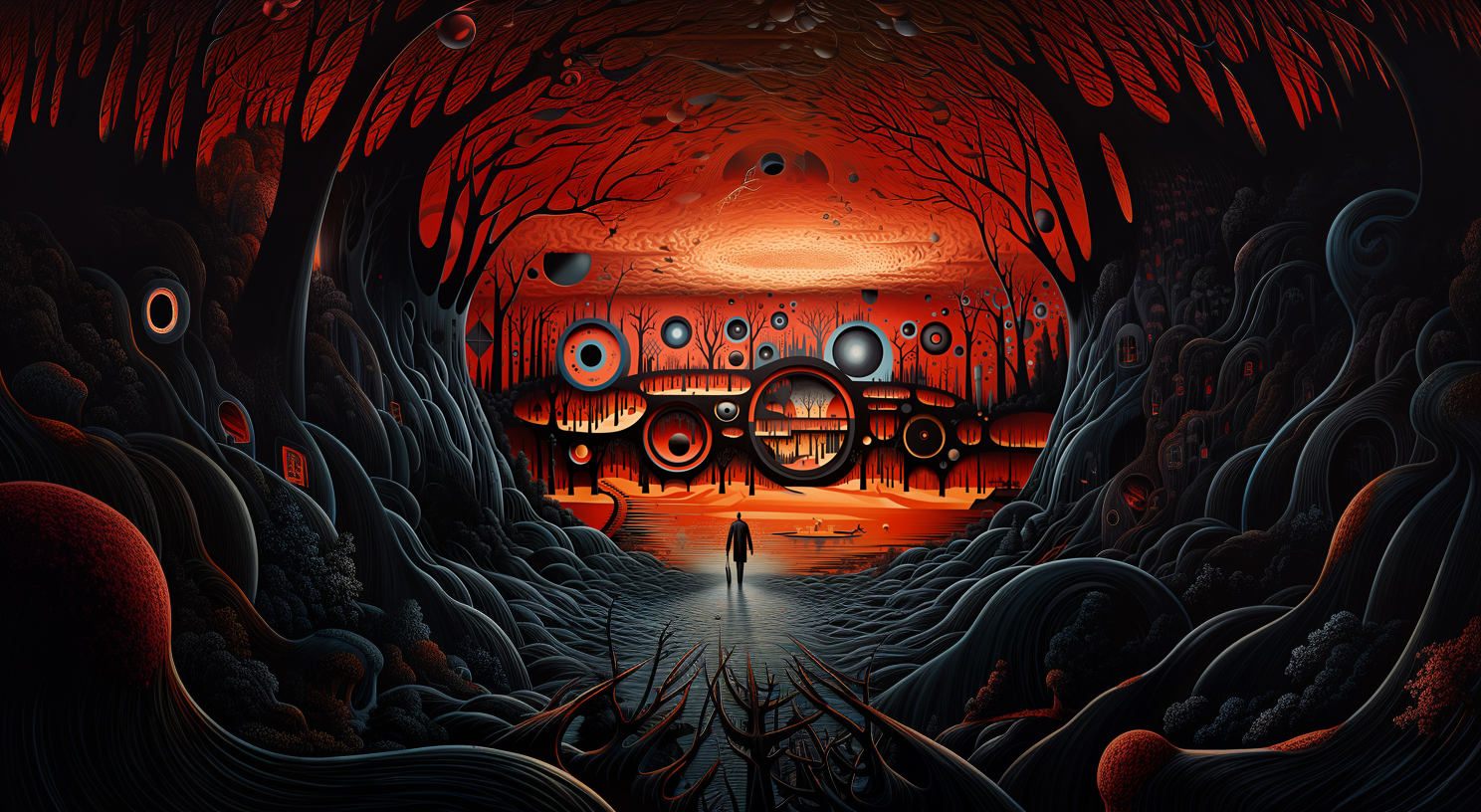
A more natural approach would be: to first learn some about ketamine-assisted psychotherapy and then sign up. I did the opposite. I didn't want the descriptions of others to influence my experience too much. I even postponed reading Pollan's book until after I was done with the ketamine sessions so it would not mess up my radar.
Because it's precisely the way it works with “classic psychedelics” and ketamine, similar to them in some regards. Once you're familiar with Huxley's metaphor of the loosened valve of perception, you'll never lose the image from your sight and stumble upon the said valve every time you reflect on your own experiences. Yes, it's nice to compare notes, but no, it doesn't feel great to just borrow someone else's themes and images.
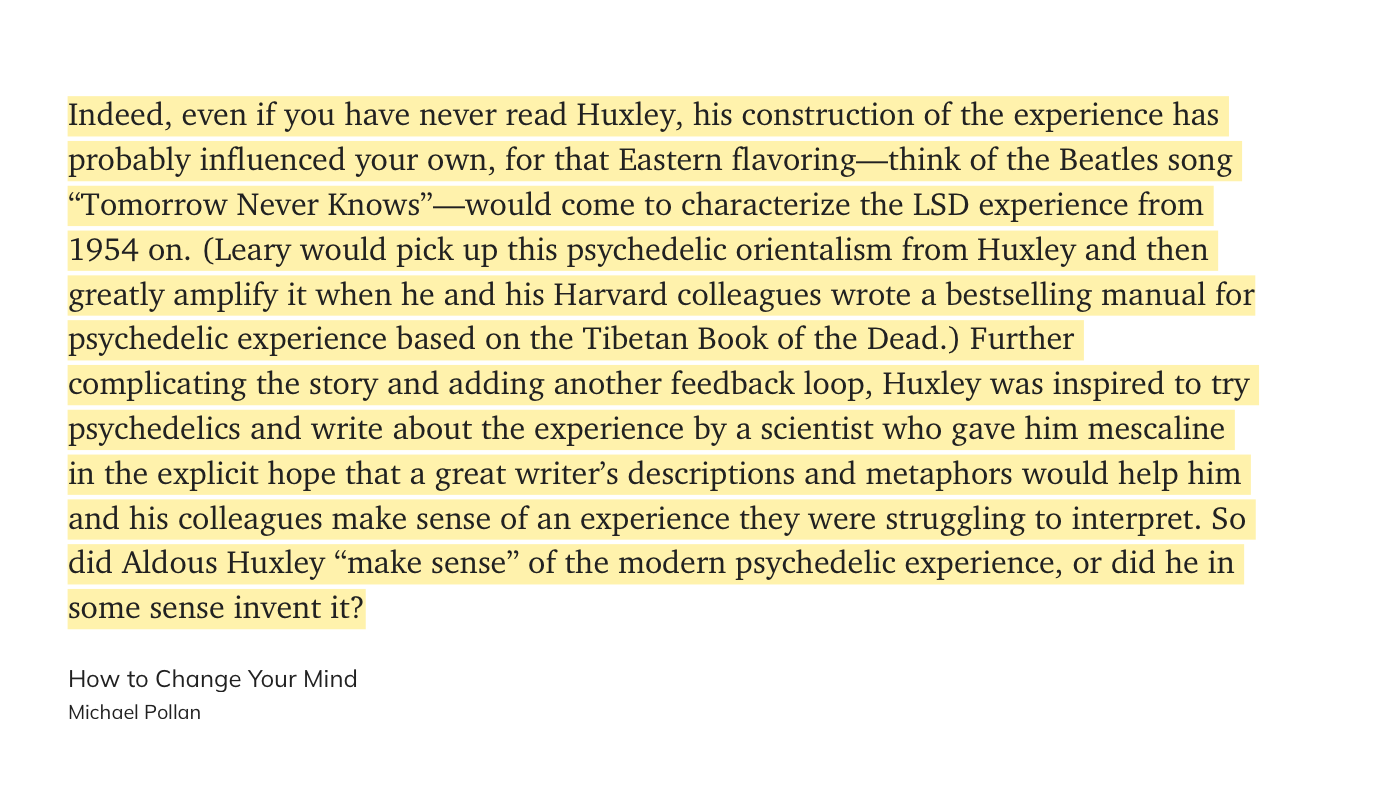
As it turns out, ketamine psychotherapy is decades old and has a history of application for a wide range of problems on both sides of the “Iron Curtain.” One of the key studies on it was made by Soviet narcologists, who used it to treat their alcoholic patients for over a decade starting in the late 80s. But I myself am not a doctor; how can I be sure of the paper's importance. Well, I just mentioned “that study from Leningrad oblast…” and my Czech doctor named the authors to me in response.
There's not much in common between me and some Soviet alcoholics, but reading their reports made me realize we might not be as different as I'd think.
Further research is indicated
What's ketamine? It's a horse tranquilizer and a human anesthetic. At some point, it became clear that sub-anesthetic doses of ketamine cause some funny special effects. If there's very little of it, the result is some lightness in the body that works so nicely for techno-parties. If there's more of it in the system, you get psychedelic experiences, ego death, and some stimulated neuroplasticity to go with it.
All things KAP are experimental. There are no standard protocols, nor is there a consensus on efficacy expectations. I haven't managed to find a meta-analysis that would definitively state: this way works the best, this one's kinda mid, and that one plain burns holes in your brain (though if there was a risk of that, I'm pretty sure I'd find it rather quickly). “Further research is indicated.”
So it was a bit shocking to read about some protocols. Like in the States, it's quite common to get ketamine via IV. Patients come once a week (sometimes more frequently than that, sometimes less), get the IV, and leave the facility with noticeably dampened symptoms of depression. And there are branches of clinics that are explicitly built for this.
On the one hand, the majority of the participants report they actually benefit from these sessions, and that's good news. On the other hand, this whole thing is designed for regular interventions and to reduce psychedelic effects; it's all about pharmacology. It's hard to imagine a more American way of handling things. I consider myself lucky that it wasn't the protocol I first encountered. Though to be fair, it doesn't seem to fit my case. The patients that get that prescribed appear to suffer way more than I. I'm not the target audience. But yes, it's not a rarity that clinics go out of business and patients stay lost with no idea how to manage their disorder.
This whole thing looks even more ironic in light of the evidence for the positive correlation between the psychedelic effects and the efficacy of the treatment. This can point to one of two things: either the more body's receptive to the substance, the more illustrious the fireworks, or the more illustrious the fireworks, the more they influence the brain and the psyche.
In other words, “further research is indicated.”
Assume it works
How does it work? This study goes deep into assumptions about how it can work on the level of cells, brain networks, and psychology. I won't go there. But let's get familiar with the latest theories on how our brain and psyche are connected.
In scientific vogue today is the following: we live inside a predictive model built by our brain based on past experience and a pretty narrow band of electromagnetic signals from the environment. The signals are being utilized by the brain to constantly correct the model. Or in a more tangential form: when I'm looking at a tree, I'm actually not looking at a tree; I'm looking at a prediction, that most likely I'm looking at a tree (say Hi to Plato and Kant).
If I'm a brain inside a human primate, this is what I'm dealing with:
- Sensory input: “Well, this combination of electromagnetic signals from the eyes, ears, and palms of my ape sure does appear to be a tree stem with a crown, whisper of the leaves, and tree bark correspondingly.”
- Priors: “My ape does not live in a desert; trees are not a rarity in the ape's habitat.”
- Prediction: “Safe to say that my ape is caressing a tree's stem. And that's the picture I will paint.”
- Reinforcement/correction: “If I'm right, it's all good. If I am fatally mistaken and the ape is actually caressing not a tree but a zoo-fugitive alligator, then the pain signals from a hand bitten off will force me to learn and adjust the model moving forward 🤞”
Now we can approximately imagine how the patients’ life-turning experiences probably work.
During our lifetime, through this constant testing, our brain absorbs the things that happen to us. Shaped by past experiences, neural circuits generate predictions and reinforce/reshape based on new feedback. Everything we live through, think, and feel, all the particles of our conscious first-person experience, are but shards of one predictive simulation the brain puts in front of us. (And if you'd look into the inner workings of what the media calls “AI,” you'll see a remotely similar picture).
If it so happened that convictions along the lines of “I'm worthless and deserve the worst things in life” time and time were not disproved, they sink deeper and deeper and become the foundation of our outlook. The brain does not care too much about her mood as long as the ape is alive. It cares about the resources, though, and if the ape is alive and breathing, the brain has been doing a decent job to this moment, and no change is necessary. If it ain't broke, don't fix it.
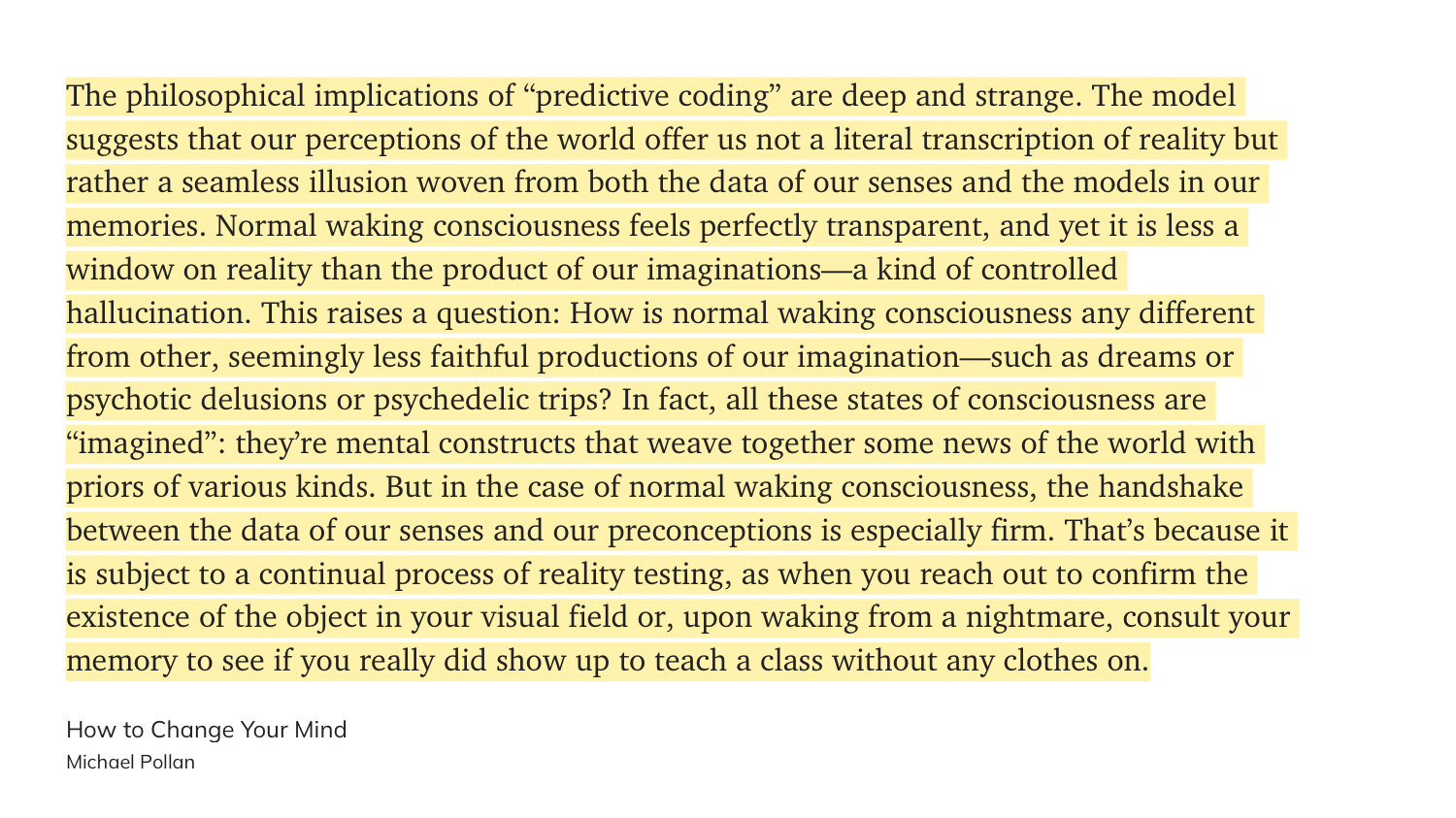
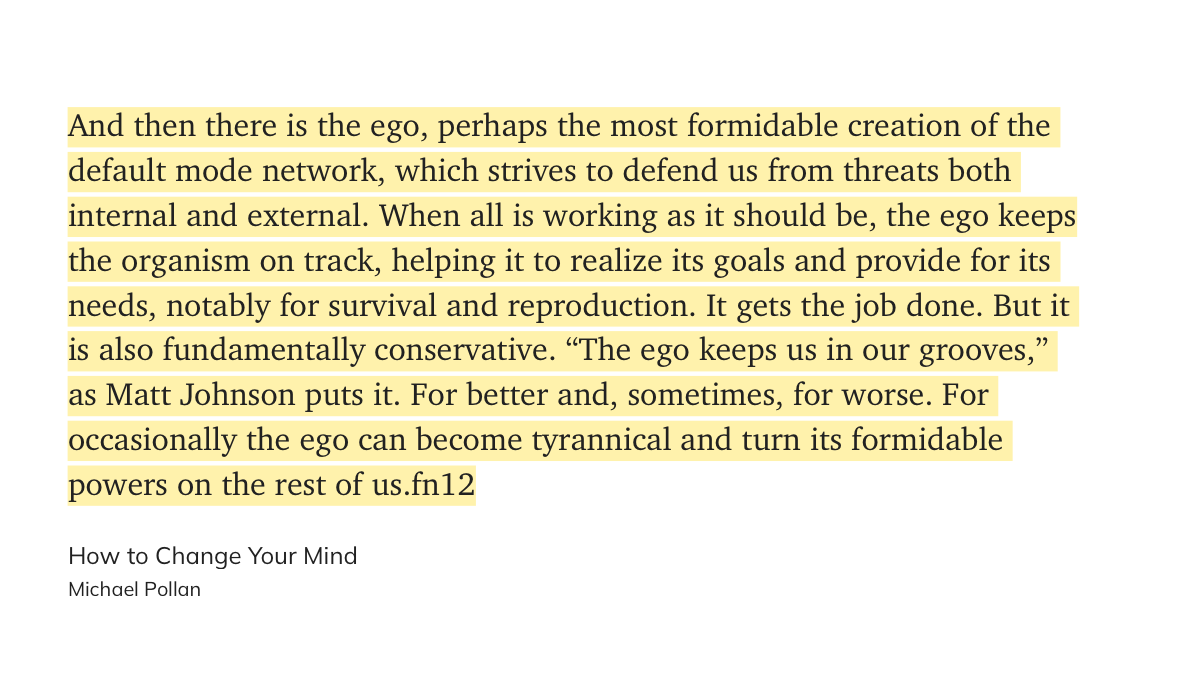
This lens shows depression as a labyrinth of such convictions paired with the inability to transform them. And the longer it goes on, the harder it is to change. As time passes, this becomes the status quo, and the issue escapes your gaze. Thinking poisonous thoughts becomes an activity as automatic and transparent as, say, breathing.
And this is the opening for the substances like MDMA, psilocybin, LSD, and ketamine. When they get to the brain, they disrupt its standard way of operating, rendering its tried and true prediction useless for a short period of time. Deep beliefs become less automatic and more opaque. One can see them as detached foreign objects open to examination, critical assessment, and reevaluation. Exactly that is the window one can climb through for a new outlook and start rewriting the stories one tells oneself about oneself.
Looking at my reports, it feels like I have experienced something akin to this. I got a chance to reconsider some things about myself, which might make my life more enjoyable in the future. The physical effects from the sessions evaporate rather quickly, but the insight “things can be different” lingers, and it is accessible at any moment till I die or my memory faults me.
To wrap up this part, here are some quotes from that Leningrad asylum:



More on the topic
- Being You: A New Science of Consciousness. Anil Seth. Didn't read it yet, but it appears to be a detailed and clear summary of Predictive Brain Theory.
- Light and easy (to the point it’s hard to listen to) podcast about KAP in the States
- Another podcast with a more grounded and critical look on the question
- The Leningrad doctors' paper
- The paper about ketamine's work mechanism
- Somewhat of a meta-analysis on ketamine and depression
Lastly, here's a good summary of the Predictive Brain Theory taken from here.

Next ↓
